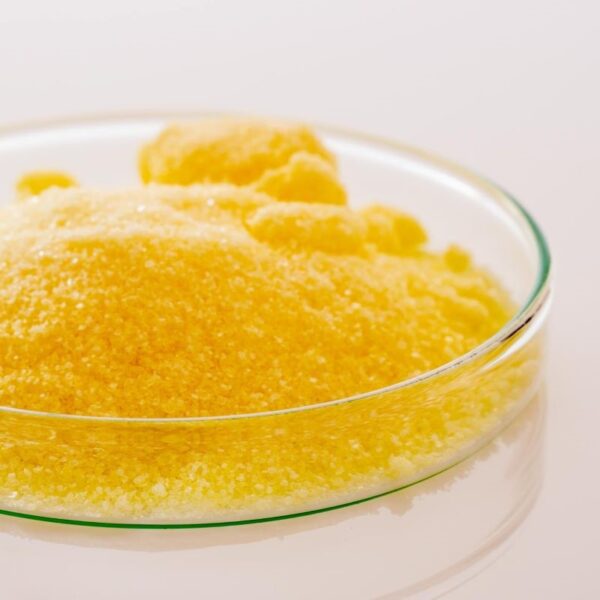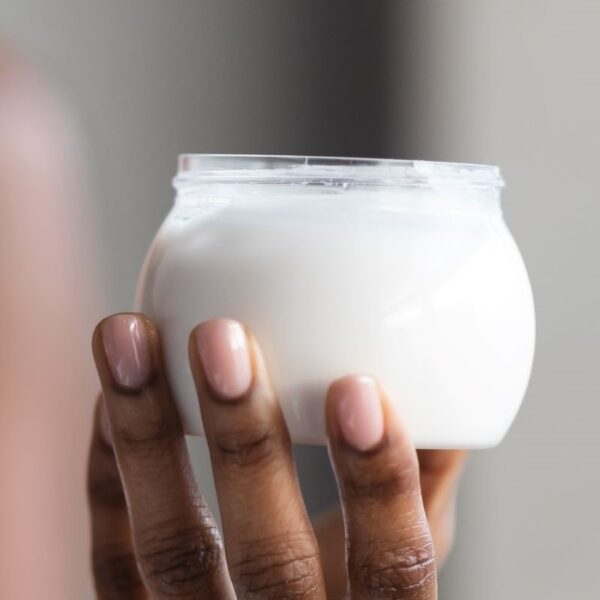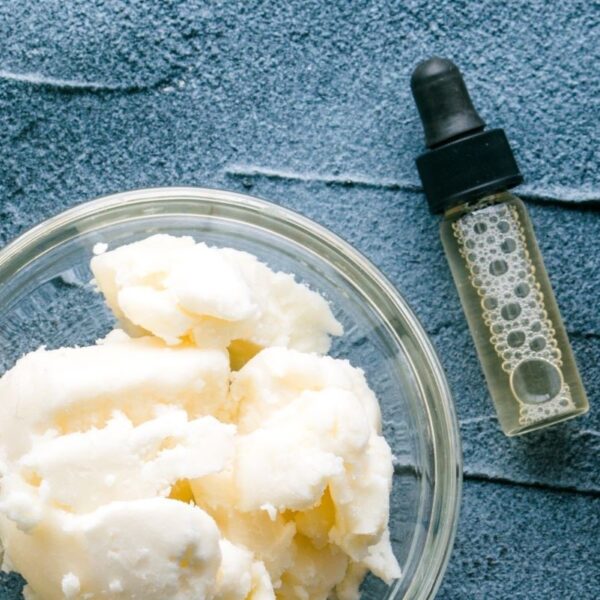Cocamidopropyl Betaine, also known as CAPB or Coco Amido Betaine, has recently gained popularity as a surfactant due to its mild and natural nature. It is a fantastic substitute for synthetic surfactants in the Personal and Home Care markets. Because CAPB has mild properties, it is essentially hypoallergenic. These properties make CAPB a highly preferred option for sensitive skin, as it tends not to cause irritation or discomfort.
What is Cocamidopropyl Betaine?
Cocamidopropyl Betaine is an amphoteric surfactant used in the formulations of personal care products and household, industrial, and institutional cleaners. It is a mixture of closely related organic compounds derived from coconut oil and dimethylaminopropylamine. It might not give a profound cleansing effect if used alone, but it makes a cleanser function better when combined with other ingredients.
Source: PubChem
As a mild surfactant derived primarily from coconut oil, CAPB is an amphiphilic compound that contains hydrophilic (water-attracting) and lipophilic (oil-attracting) parts. As such, it effectively helps to dissolve oils and remove dirt from skin and hair by lowering the surface tension of water, thus enhancing the wetting and cleansing properties of personal care products. Its foam-boosting and viscosity-enhancing properties also make it an essential ingredient in many cosmetic formulations.
Use of Cocamidopropyl Betaine in Personal Care
Cocamidopropyl Betaine is ubiquitously used in the personal care industry. Its excellent foaming, cleaning, and viscosity-modifying properties are a primary component in many shampoos, shower gels, facial cleansers, and liquid soaps. Additionally, CAPB has conditioning properties that can make hair and skin feel softer and smoother. Its mild nature is particularly beneficial in products intended for sensitive skin types.
CAPB’s versatility extends beyond soaps and shampoos. Due to its excellent toxicological profile, it has also seen an increase in its use in baby care and the oral care markets. It acts as a secondary surfactant in a lot of rinse-off products. It is also used in contact lens solutions for its gentle yet effective cleaning and disinfecting properties. CAPB is a mild abrasive and humectant in toothpaste that enhances the overall texture. Moreover, in the production of anti-dandruff shampoos, CAPB is an excellent solubilizer for active ingredients like zinc pyrithione, contributing to product efficacy and cosmetic acceptability.
Applications in the Cosmetic Field
CAPB is an amphoteric surfactant and acts as a foam booster, thickener, anti-static, and emulsifying agent.
| Function | Applications |
| Surfactant | CAPB is an amphoteric surfactant that generally acts as a co-surfactant with other primary ingredients, enhancing its cleansing property without disrupting the skin’s barrier function. |
| Foam Enhancer | CAPB is a great foam-enhancing ingredient used in shampoos and body washes. It helps to create a rich lather when it comes to contact with water, forming a good amount of foam in products. |
| Thickener | CAPB helps increase a product’s viscosity, increasing its creamy texture and making it thicker. It’s helpful in applications such as hair conditioners. |
| Anti-static agent | CAPB helps reduce the buildup of static electricity in hair and skin products, enhancing manageability and feel. |
| Emulsifying agent | CAPB facilitates mixing oil and water-based ingredients, ensuring a stable, homogenous product formulation. |
Product Examples
| Type | Examples |
| Hair Care | Shampoo, Conditioner |
| Skin Care | Makeup remover, Body wash, Liquid soap, Shaving cream, Hand soaps |
| Oral care | Toothpaste |
| Baby care | Baby wash, Shampoo, Baby bubble bath |
Properties of Cocamidopropyl Betaine
Beyond its cleaning, foaming, and conditioning properties, CAPB is renowned for its compatibility with other surfactants and stability across a wide range of pH values. Its strength and effectiveness in hard water make it suitable for various formulations. Additionally, CAPB’s amphoteric nature—meaning it can act as both an acid and a base—enhances its mildness, reducing potential skin irritation and sensitization compared to traditional anionic surfactants.
| Physical Form | Liquid |
| Color | Pale yellow |
| Odor | Faint |
| Shelf Life | 24 months |
| Molecular Weight | 342.524 g·mol−1 |
| Appearance at 25°C | Yellow Liquid |
| pH (1%) 25°C | 4-8 |
| Density at 25°C | 1.05 – 1.07 g/cm³ |
| Viscosity, cps at (30°C) | 300-600 cps |
| Melting Point | < −10 °C |
| Boiling Point | 104.3℃ |
| Refractive Index at 20°C | 1.308 – 1.395 |
| Specific Gravity at 25°C | 1.04 |
| HLB Value | 13.4 |
| Solubility | Methanol (Sparingly), Water (Sparingly) |
Recommended Storage and Handling
CAPB should be stored in its original sealed containers at 0°C and 40°C. This product remains stable for at least one year. Because of its high salt content, the product can have a corrosive effect during storage in stainless steel tanks.
Typical Formulations
Here is an example of a Cosmetics Formulation table with Cocamidopropyl Betaine along with the % weight of ingredients:
MEN CARE: Shower Gel 3 in 1
| PHASE | INCI Name | TRADE Name | Supplier | % Wt. |
| A | Aqua | Water | – | To 100.00 |
| Disodium EDTA | EDTA | Merck | 0.05 | |
| Acrylates/Steareth-20 Methacrylate Crosspolymer | Aculin 88 Polymer | Dow | 3.50 | |
| B | Sodium Laureth Sulfate | Genapol LRO Liq. | Clariant | 15.00 |
| PEG-7 Glyceryl Coconate | Cetiol HE | BASF | 3.00 | |
| Coco-Glucoside | Plantacare 818 UP | BASF | 2.00 | |
| Glycol Distearate (and) Laureth-4 (and) Cocamidopropyl Betaine | Perlogen S 900 | Clariant | 5.00 | |
| Vinyldimethicone / Dimethicone Copolymer (and) C12-13 Pareth-23 (and) C12-13 Pareth-3 | CHT-BeauSil™ FLUID 8120 EM | CHT | 5.00 | |
| Cocamidopropyl Betaine | Dehyton K | BASF | 5.00 | |
| C | Sodium Chloride | NaCl | – | 1.20 |
| Fragrance, Preservative | – | q.s. | ||
| D | Sodium hydroxide | NaOH, 10% | – | To pH 6.5 |
| 100.00 |
Source: CHT
Formulation Procedure
- Blend all ingredients of Phase A
- Add ingredients of Phase B
- Add Phase C
- Adjust pH with phase
| Appearance | Milky white |
| pH-value | 6.5 |
| Viscosity | 5.500 mPas |
| Stability | 4 weeks at 45°C |
Safety & Regulatory Considerations
| FDA Information | GRAS Accepted and FDA Approved |
| EU Information | Cocamidopropyl Betaine is not listed on any of the annexes of the European Union (EU) Cosmetics Regulation. |
| United Kingdom (UK) and Oslo and Paris Convention (OSPAR) | According to the Cosmetic Ingredient Review (CIR), Cocamidopropyl Betaine is safe in cosmetics as long as it is formulated to be non-sensitizing and may be based on a quantitative risk assessment. |
| Canadian Environmental Protection Act (CEPA) | According to the Cosmetic Ingredient Review (CIR), Cocamidopropyl Betaine is safe in cosmetics as long as it is considered non-sensitizing and may be based on a quantitative risk assessment. |
| Cosmetic Ingredient Review (CIR) Information | According to the Cosmetic Ingredient Review (CIR), Cocamidopropyl Betaine is safe in cosmetics as long as it is considered non-sensitizing and may be based on a quantitative risk assessment. |
Health Effects and Safety of Cocamidopropyl Betaine
- The sensitizing potential of CAPB is considered low, especially given its widespread distribution in cosmetic and detergent products. Furthermore, the extensive body of data documenting the ability of impurities in CAPB to cause skin sensitization demonstrates that the risk of contact allergy can be minimized by strictly controlling the levels of AA and DMAPA in CAPB.
- The acute toxicity of CAPB is very low. About 30% of active formulations irritate the skin and the eyes, while ≤ 10 % of active solutions cause only mild skin and eye reactions.
- Neat CAPB is an irritant to the skin and eyes. The irritation potential of aqueous solutions of CAPB depends on concentration. The local effects of hand wash solutions containing CAPB do not cause concern, given that the concentrations of CAPB in such solutions are well below 1% and, therefore, not expected to irritate the eye or skin.
Identification Numbers
| Chemical Name | Cocamidopropyl betaine |
| CAS Number | 61789-40-0 |
| EC Number | 263-058-8/ 274-923-4 |
Acceptable Limits or Maximum Usage
CAPB was listed as an ingredient in 2460 cosmetic formulations voluntarily reported to FDA. The reported use concentrations range from 0.2% to 25%. The maximum usage level of Cocamidopropyl Betaine in the Personal care industry as per the FDA (VCRP Program) is as follows:
| Category | Usage Level |
| Leave-on | 0.2-6 % |
| Rinse off | 0.005-11 % |
| Bath products | 0.06-7 % |
| Baby products | 2-6 % |
| Deodorant (underarm) | 2 % |
Source: SagePub
Fun Facts About Cocamidopropyl Betaine
- Cocamidopropyl Betaine (CAPB) is primarily derived from coconut oil.
- CAPB has been used commercially since the 1950s. It was first used during World War II as a cleanser to lather in cold water. Later, the first CAPB shampoo was developed using coconut oil as a base. The mild formula lathered well but wasn’t as astringent as regular detergents. It became the famous “no more tears” baby shampoo.
- CAPB is biodegradable, which means it breaks down into simpler substances by biological means, posing less of a threat to the environment than non-biodegradable compounds.






